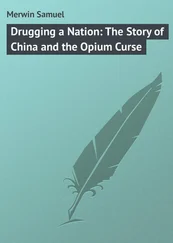Edmund Gardner - The Story of Siena and San Gimignano
Здесь есть возможность читать онлайн «Edmund Gardner - The Story of Siena and San Gimignano» — ознакомительный отрывок электронной книги совершенно бесплатно, а после прочтения отрывка купить полную версию. В некоторых случаях можно слушать аудио, скачать через торрент в формате fb2 и присутствует краткое содержание. Жанр: foreign_antique, foreign_prose, на английском языке. Описание произведения, (предисловие) а так же отзывы посетителей доступны на портале библиотеки ЛибКат.
- Название:The Story of Siena and San Gimignano
- Автор:
- Жанр:
- Год:неизвестен
- ISBN:нет данных
- Рейтинг книги:3 / 5. Голосов: 1
-
Избранное:Добавить в избранное
- Отзывы:
-
Ваша оценка:
- 60
- 1
- 2
- 3
- 4
- 5
The Story of Siena and San Gimignano: краткое содержание, описание и аннотация
Предлагаем к чтению аннотацию, описание, краткое содержание или предисловие (зависит от того, что написал сам автор книги «The Story of Siena and San Gimignano»). Если вы не нашли необходимую информацию о книге — напишите в комментариях, мы постараемся отыскать её.
The Story of Siena and San Gimignano — читать онлайн ознакомительный отрывок
Ниже представлен текст книги, разбитый по страницам. Система сохранения места последней прочитанной страницы, позволяет с удобством читать онлайн бесплатно книгу «The Story of Siena and San Gimignano», без необходимости каждый раз заново искать на чём Вы остановились. Поставьте закладку, и сможете в любой момент перейти на страницу, на которой закончили чтение.
Интервал:
Закладка:
The Emperor came back to Siena on October 12th, with the Empress. He entered at the Porta Tufi, where the Twelve and the Salimbeni met him, all crowned with flowers and bearing olive branches. He alighted at the Salimbeni palace, while his followers were quartered in the deserted houses of the exiled nobles. The next day, after Mass in the Duomo, he knighted Reame and Niccolò Salimbeni – “and very little pleasure did any one take in that,” says the Sienese Chronicle grimly. An enormous present of money was made to him and the Empress, as also to Malatesta, and when the Emperor left on the 14th, the Empress remained behind for some days to induce Siena to redeem the imperial crown which had been pawned in Florence. In the meanwhile the nobles were making alarms and excursions in the contado, almost up to the gates of the city. There was another revolution in December. The lowest portion of the populace, or at least lower than those hitherto represented in the administration – “verily plebeians and entirely new men,” as Malavolti has it – assailed the Palazzo, forced their way in, hunted out the representatives of the Twelve and Nine alike. Finally by a sort of general compromise a council of 150 riformatori was appointed, who reformed the State by the creation of a supreme magistracy of Fifteen Defenders, composed of eight of the popolo minuto , four of the Twelve, three of the Nine. This was the origin of the Monte dei Riformatori , because the name was retained in the families of those popolani who took a part in this regime, the names of Nine and Twelve ( Nove and Dodici ) being retained in those families who belonged to these two orders and shared their fortunes. The Monti of Riformatori, Dodicini, and Noveschi were likewise known as the People of the Greater Number, the People of the Middle Number, and the People of the Lesser Number respectively. 13 13 Malavolti, ii. 7. p. 132.
The Emperor rode again into Siena, with the Empress and a long train of knights and nobles, on December 22nd. He dismounted as before at the Palace of the Salimbeni. The nobles were still ravaging the contado and, by means of the Marquis of Montferrat, Charles made some sort of attempt to effect a reconciliation between them and the people, which was cut short by the intrigues of the Salimbeni and Dodicini, who had gained the shallow Caesar’s ear. The arrival of a papal legate, the Cardinal of Bologna, with armed men at the end of the month increased the general alarm: it was rumoured that Charles intended to sell Siena to the Pope. The Emperor demanded the surrender of the fortresses of Massa, Montalcino, Grosseto, Talamone and Casole, and implied that he meant to reform the State; the Fifteen summoned a general council of more than 800 citizens, and returned an absolute refusal. Then the Salimbeni thought that the time had come to strike. On January 18th, Niccolò Salimbeni rode furiously through the street with armed followers, shouting “Long live the People! Down with the traitors who want the nobles back!” Malatesta with his cavalry entered the Campo, drew up in front of the Palace, calling upon the Signoria in the name of Caesar to surrender, and to expel the three representatives of the Nine. Instantly the alarm was sounded from the Mangia Tower. The armed forces of the people poured into the Campo, and their captain, Matteino di Ventura Menzani, with the gonfalone in his hand, led them against the foreign cavalry. The bells were ringing a stormo from churches and palaces, clashing and clanging over the heads of republicans and imperialists, when Caesar himself, his royal helmet crowned with a garland, appeared upon the scenes. With the Salimbeni and a long train of horsemen he was making his way to the Palazzo, when the victorious people, having routed Malatesta, burst upon him at the Croce del Travaglio. The imperial banner was struck down and the imperial forces broken. At the Palazzo Tolomei “there was an incredible battle,” the imperial escort fighting desperately to cover the Caesar’s retreat. One of the Salimbeni, with an olive branch in his hand, came into the Campo in the name of Caesar to implore the Captain to grant a cessation of hostilities, but was promptly sent about his business. By the time that the unfortunate Emperor got back to the Salimbeni Palace, he had lost more than 400 killed – including two of his nephews – and all the hospitals were full of his wounded.
Before the fight had ended the Defenders sent a solemn procession to bring back the three of the Nine who had left the Palace; “with a goodly company, preceded by the trumpets, with garlands on their heads and with olive branches in their hands; they put them back in the Palace in their place, embracing them and kissing them with the greatest tenderness and craving pardon.” The Captain of the People issued a proclamation that no one should sell nor give any food to the Emperor and his folk. “The Emperor remained alone with the greatest fear that any rascal ever had. The people stared at him; he wept and made excuses, embraced and kissed every person that went to him, and said: ‘I have been betrayed by Messer Malatesta and by Messer Giovanni and by the Salimbeni and by the Twelve.’” 14 14 Neri di Donato, Cronica Senese , 202-206.
Half starved and altogether terrified, the unfortunate man promised anything the Sienese wanted, in order to get away from the dreadful city. He made the Defenders his vicars in perpetuity, granted the Sienese all conceivable privileges, pardoned everybody everything, accepted a handsome sum of money, and went. Many of the Salimbeni and others tried to escape disguised among the knights of his train, but several were detected and handed over to the Captain of the People. It was said that there had been a conspiracy to make over the lordship of Siena to Malatesta with an annual tribute to the Emperor, to give the Salimbeni and the Dodicini two days of complete vengeance over their foes, to allow the soldiers three days’ sack of the city. But the matter was hushed up and the prisoners released, to the indignation of the populace.
A few months of anarchy followed. The Salimbeni and the Dodicini were at the throats of the Noveschi in the city, while the banished nobles maintained a state of war in the contado. The Defenders and the Council of the Riformatori appointed an esecutore to maintain order and execute justice, and formed a new association known as the Casata Grande del Popolo, with the white lion for arms, to preserve the popular constitution of the State. In July, 1369, by arbitration of the Florentine Republic, peace was at last made, and the six exiled families – Piccolomini, Malavolti, Saracini, Tolomei, Forteguerri, Cerretani – were reconciled with the Republic and restored to their country, with the right of sitting in all the magistracies of the State, saving only those of the fifteen Defenders, the three Gonfalonieri, and the Councils of the Riformatori. The treaty was received with universal satisfaction – but the peace was of brief duration. Although the Salimbeni had previously made terms with the other nobles, they continued to hang the banner of the People out of their windows “come consorti del Popolo.”
Among the lowest degrees of the popolo minuto – men of the infima plebe , workers and carders of the Art of Wool, who lived in the narrow lanes up and down the Costa di Porta Ovile – an association had been formed which afterwards came to be known as the Compagnia del Bruco, from the badge of the contrada. In July 1371, induced partly by hunger, partly by the oppression of the Masters of the Arte della Lana, a number of them rose, took grain by force from the houses where it was stored, and made a disturbance in the Campo. The Senator (as the Conservatore and Capitano di Guerra was now called) arrested three of their ringleaders, put them to the torture and sentenced them to death. They were wool-combers of the Art, all belonging to the association. At once the whole Compagnia rose in arms, and with tremendous uproar, on July 14th, assailed the Palace of the Senator, demanding that the three should be released or else they would burn the place down. Hearing this, the Captain of the People, Francesco di Naddo, left the Palazzo del Commune with the gonfalone and the trumpets before him, and forced his way up to the Senator’s Palace. He induced the Senator to surrender the three prisoners – with the sole result that the whole Compagnia, roaring “Out with the Nine and the Twelve,” “Long life to the People,” led by a certain Ferraccio swept through the streets, tore down the banner of the People from the Salimbeni palace, seized the gonfaloni of the terzi, drove headlong before them a band of nobles who had tried to stay their march, and finally – with the aid of the greater part of the populace – captured the Palazzo and expelled the four of the Twelve and the three of the Nine from the Signoria, substituting seven of the “Popolo del Maggior Numero.” There was a short breathing space in which the Council of the Riformatori attempted a sort of compromise. But in the meanwhile the leaders of the Dodicini, with some of the Salimbeni and others of the people who misliked what had happened, gained over the Captain and the three Gonfalonieri to their side. It was arranged that the Captain should secretly introduce armed men into the Palazzo, that each Gonfaloniere should secure his own terzo, and that the Salimbeni should march in from the contado with all their forces and seize the city gates, after which there should be a general massacre of all their opponents and the whole State should be reformed. The plot was to take effect on August 1st; but some inkling of what was intended reached the Signoria. Many arrests were made, and the conspirators resolved to precipitate matters. But on the night of the 29th, hearing the clash of arms in the Captain’s apartments, the Defenders were put upon the alert, and succeeded in taking the Captain red-handed in the act of opening the gate. When day broke, the whole city was in an uproar. The three Gonfalonieri and the Dodicini had armed their adherents to the number of nearly two thousand men; they had occupied the mouths of the Campo and the Croce del Travaglio. A horrible massacre commenced in the quarters of the carders’ association. The conspirators, armed with crossbows, lances and swords fell upon the unarmed populace, hunting them up and down the narrow lanes along the Costa d’Ovile, breaking into the houses, murdering men, women and children alike. Then they turned to assail the Palace. But the shrieks and the cries for aid of the fugitives had roused the nobles and certain of the Noveschi, who armed themselves and moved to the support of the Signoria. There was fierce fighting in the Campo and at the foot of the Palace, and in each terzo; but at last the victory was complete on the side of the government, and the soldiery of the Salimbeni only moved up from the contado to find that all was over. There was a large number of executions. On the 1st of August, the day on which the conspiracy was to have taken effect, the Captain of the People himself, dressed in scarlet, was led out into the Campo and solemnly beheaded upon a scaffold covered with scarlet cloth. The Gonfaloniere of the Terzo di Città was taken in hiding near San Domenico, and executed at the Porta Salaia; his two colleagues, who had escaped, were declared rebels, with many others. In the new reformation of the State, the popolani of the Middle Number ( Dodicini ) were excluded, the Fifteen being composed of twelve popolani of the Greater Number ( Riformatori ) and three of the Minor Number ( Noveschi ), while almost all the artisans, minori artifici , were added to the number of the Riformatori .
Читать дальшеИнтервал:
Закладка:
Похожие книги на «The Story of Siena and San Gimignano»
Представляем Вашему вниманию похожие книги на «The Story of Siena and San Gimignano» списком для выбора. Мы отобрали схожую по названию и смыслу литературу в надежде предоставить читателям больше вариантов отыскать новые, интересные, ещё непрочитанные произведения.
Обсуждение, отзывы о книге «The Story of Siena and San Gimignano» и просто собственные мнения читателей. Оставьте ваши комментарии, напишите, что Вы думаете о произведении, его смысле или главных героях. Укажите что конкретно понравилось, а что нет, и почему Вы так считаете.












